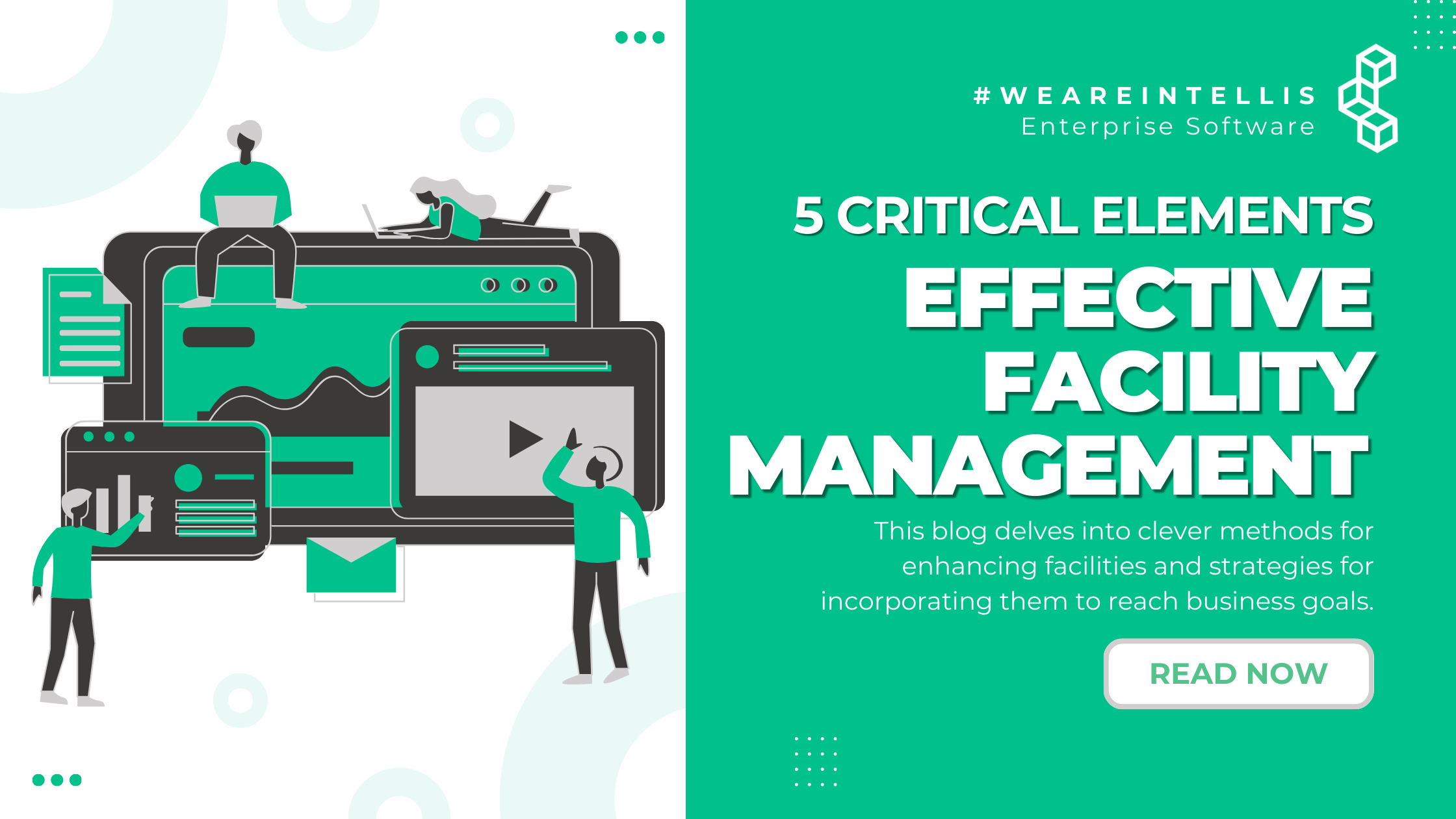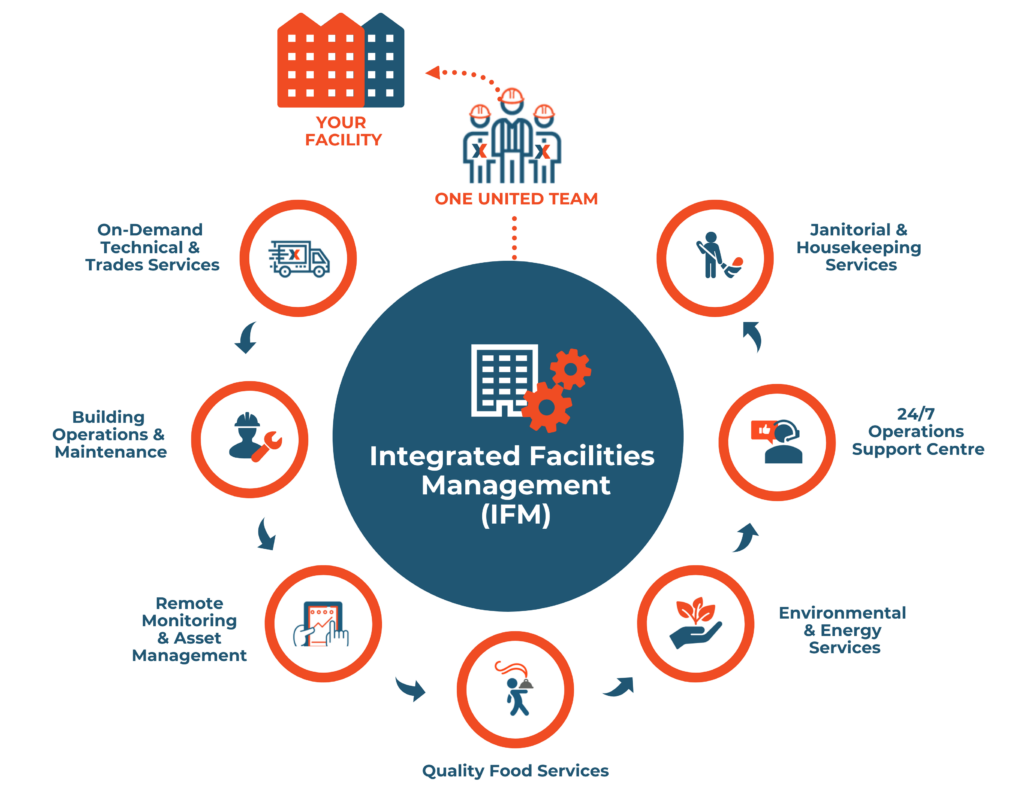Facility Management Solutions-- Enhance Your Structure's Performance
Wiki Article
Key Patterns Forming the Future of Center Management in 2024
As we look in advance to 2024, the landscape of center monitoring is poised for significant transformation, driven by numerous essential trends. The assimilation of smart structure modern technologies and a change in the direction of data-driven decision-making assurance to improve functional effectiveness while prioritizing sustainability in technique.Smart Building Technologies

Smart building technologies include a large selection of systems, consisting of smart lighting, heating and cooling controls, and protection systems. By incorporating these systems, center supervisors can monitor and adjust parameters in real-time, resulting in considerable decreases in energy waste and operational expenses. Clever sensing units can identify tenancy levels and change lighting and temperature as necessary, making certain that power is only used when necessary.
Moreover, these modern technologies promote improved data collection, allowing companies to track use patterns and determine opportunities for further renovations. The execution of wise building modern technologies not just adds to sustainability goals however also develops much healthier work environments that can enhance worker productivity and complete satisfaction.
As we move right into 2024, the adoption of clever building technologies will likely increase, reflecting a more comprehensive change towards even more intelligent, receptive, and sustainable center administration practices.
Data-Driven Choice Making
Increasingly, companies are leveraging data-driven decision making to boost facility monitoring practices. By harnessing data analytics, center managers can acquire actionable understandings that considerably boost operational performance and resource appropriation. The combination of innovative innovations, such as IoT sensing units and real-time tracking systems, makes it possible for the collection of large quantities of data on building efficiency, tenancy rates, and power intake.This wealth of details allows facility managers to identify patterns, forecast upkeep needs, and proactively address problems prior to they escalate. Predictive analytics can anticipate tools failings, reducing downtime and repair work prices. In addition, data visualization tools help with much better interaction amongst stakeholders, ensuring that educated decisions are made collaboratively.
Furthermore, data-driven techniques boost critical preparation by making it possible for center managers to evaluate the efficiency of existing methods and make notified options relating to financial investments in technology or facilities. As companies significantly focus on functional quality, data-driven choice production is positioned to come to be a keystone of effective center management strategies in 2024 and beyond. Ultimately, the ability to leverage data effectively will empower companies to develop extra reliable, effective, and resistant centers.
Sustainability and Eco-friendly Practices
The emphasis on data-driven decision making naturally lines up with the growing concentrate on sustainability and green practices within facility management. As companies progressively focus on environmental obligation, facility supervisors are leveraging analytics to maximize source use, lower waste, and lessen carbon impacts. This calculated technique makes it possible for the combination of energy-efficient systems, such as LED illumination, smart heating and cooling controls, and sustainable energy sources into center operations.Moreover, the website link execution of sustainable practices expands beyond power usage. Facility supervisors are adopting environment-friendly materials and advertising recycling campaigns to produce a round economic climate within their centers. This not only boosts the environmental account of the organization yet her latest blog likewise cultivates a culture of sustainability amongst employees.
Conformity with environmental laws is one more important element driving the fostering of eco-friendly techniques. By utilizing information analytics, center managers can keep an eye on conformity metrics and determine locations for improvement, making sure adherence to global and neighborhood sustainability requirements.
Crossbreed Job Models
A considerable change towards hybrid job versions is reshaping the landscape of facility administration in 2024. This standard combines in-office and remote job, necessitating a reevaluation of area utilization, resource allowance, and staff member engagement techniques. Organizations are progressively identifying the relevance of flexible workspaces that satisfy diverse requirements and choices.Center managers have to adapt by applying versatile workplace designs that sustain collaborative initiatives while providing locations for focused work. This article source consists of the combination of technology to facilitate seamless interaction and cooperation among remote and in-office employees. Smart structure services, furnished with sensing units and analytics, enable for real-time surveillance of space use, making it possible for organizations to maximize their environments effectively.
Additionally, crossbreed job versions emphasize the need for effective facility management that prioritizes worker experience. In significance, the hybrid job model is transforming center management, urging a proactive technique to meet the evolving demands of the workforce.
Improved Passenger Health
As organizations embrace hybrid job versions, an enhanced emphasis on owner health is coming to be indispensable to center administration methods. Facility Management. This shift acknowledges that a healthy and completely satisfied workforce straight affects productivity and retention prices. Center managers are currently focusing on settings that promote mental and physical health, integrating elements such as all-natural illumination, biophilic design, and accessible wellness sources

Modern technology plays an essential role in this evolution. Smart building systems can keep track of environmental elements and change setups in real-time, ensuring optimal convenience degrees - Facility Management. Furthermore, responses devices, such as tenancy sensing units and worker surveys, allow facility supervisors to consistently improve wellness campaigns based upon passenger requirements.

Final Thought
In 2024, the future of center monitoring will certainly be dramatically affected by the assimilation of clever structure technologies and data-driven decision-making, fostering improved functional performance. These fads collectively underscore the developing landscape of facility management in response to modern obstacles and possibilities.Center managers are adopting environment-friendly materials and promoting recycling initiatives to develop a round economic climate within their facilities.A significant change in the direction of crossbreed work models is improving the landscape of center administration in 2024.Moreover, crossbreed work models stress the requirement for efficient center administration that prioritizes staff member experience.As companies embrace hybrid job designs, an increased focus on passenger wellness is becoming indispensable to facility management approaches.In 2024, the future of facility monitoring will certainly be substantially influenced by the assimilation of smart structure innovations and data-driven decision-making, cultivating enhanced functional effectiveness.
Report this wiki page